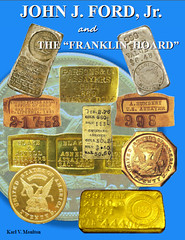
About UsThe Numismatic Bibliomania Society is a non-profit organization promoting numismatic literature. For more information please see our web site at coinbooks.org SubscriptionsThose wishing to become new E-Sylum subscribers (or wishing to Unsubscribe) can go to the following web page link MembershipThere is a membership application available on the web site Membership Application To join, print the application and return it with your check to the address printed on the application. Membership is only $15 to addresses in the U.S., $20 for First Class mail, and $25 elsewhere. For those without web access, write to: David M. Sundman, Secretary/TreasurerNumismatic Bibliomania
Society AsylumFor Asylum mailing address changes and other membership questions, contact David at this email address: dsundman@LittletonCoin.com SubmissionsTo submit items for publication in The E-Sylum, just Reply to this message, or write to the Editor at this address: whomren@coinlibrary.com
BUY THE BOOK BEFORE THE COINYou won't regret it! |
- WAYNE'S WORDS: THE E-SYLUM MAY 26, 2013
- NEW BOOK: CANADIAN COINS VOLUME 2: COLLECTOR & MAPLE LEAF ISSUES
- NEW PERIODICAL: REVUE NUMISMATIQUE ASIATIQUE
- BOOK: U.S. COIN & COLUMBIAN COIN PATTERN GLASS
- SIAMESE COINS BOOK WINS IAPN PRIZE
- SURVEY OF NUMISMATIC RESEARCH 2008-2013 SELECTION SOUGHT
- RAYMOND N. MERENA 1937 - 2013
- PRESIDENTIAL COIN & ANTIQUE AUCTION #83 CATALOG AVAILABLE
- AN UPDATE ON MOULTON'S FRANKLIN HOARD BOOK
- MORE ON THE "MODEL ARTIST'S" THEATER
- MORE ON S. W. CHUBBUCK
- NOTES FROM E-SYLUM READERS: MAY 26, 2013
- HISTORY OF THE NATIONAL NUMISMATIC COLLECTION
- KENNEDY MINT PLEADS GUILTY TO KILLING FISH
- 1862 RECTORTOWN, VA SCRIP NOTE ON RECYCLED BANK CHECK
- HARVEY STACK ON CATALOGING 1954 LARGE CENT SALES
- MICRO-MEN ON HOBO NICKELS
- ANCIENT COIN COULD REWRITE AUSTRALIAN HISTORY
- LEGAL WARNINGS ON FLAWED JAMES JOYCE COIN
- DIGITIZING THE VATICAN LIBRARY
- URSULA KAMPMANN'S TURKEY DIARY, PART 5
- NEW FRENCH REPUBLIC VALUES GOLD AND SILVER COINS
- CRICKET COIN TOSS IDEA DISPUTED
- FICTIONAL SHIPS ON COINS: FLYING DUTCHMAN AND THE PEQUOD
- NEW EURO BANKNOTES PRESENT VENDING MACHINE PROBLEM
- TECHNOLOGY REVIEW ARTICLE ON THE EVOLUTION OF BITCOINS
- FEATURED WEB PAGE: HISTORY OF KOREAN COINAGE
WAYNE'S WORDS: THE E-SYLUM MAY 26, 2013

New subscribers this week include Thijs Verspagen (Librarian of the GeldMuseum, Netherlands and Digital Library Numis webmaster), and Karl Lamson. Welcome aboard! We have 1,649 email subscribers, plus 234 followers on Facebook.
This week we open with new numismatic books & periodicals, and an old book on coin glass. Other topics include the Franklin hoard book, S. W. Chubbuck, the National Numismatic Collection, the flawed James Joyce coin, and fictional ships on coins.
To learn more about Ray Merena, Micro-Men, Morse Code on paper scrip, the Holger Dombrowski Library, the coins of King Songjong, and numismatics, cyanide, and 30,893 dead fish, read on. Have a great week, everyone (and don't forget the June 1st closing date of the Sklow numismatic literature sale)!
Wayne Homren
Editor, The E-Sylum
NEW BOOK: CANADIAN COINS VOLUME 2: COLLECTOR & MAPLE LEAF ISSUES
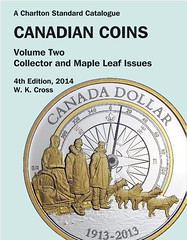 The fourth edition of Canadian Coins, Volume 2, Collector and Maple Leaf Issues will be released May 31st, 2013, at the Toronto Coin Expo which will be held at the Toronto Reference Library. The new 464-page fourth edition is current to March 2013, with all new Mint issues. This 4-colour catalogue tracks all Mint and maple leaf issues from 1954 to the current releases.
The fourth edition of Canadian Coins, Volume 2, Collector and Maple Leaf Issues will be released May 31st, 2013, at the Toronto Coin Expo which will be held at the Toronto Reference Library. The new 464-page fourth edition is current to March 2013, with all new Mint issues. This 4-colour catalogue tracks all Mint and maple leaf issues from 1954 to the current releases.
A 16% increase in the page count from 400 in the third edition to 464 in the fourth was necessary to keep up with the more than 150 new issue (2012 and 2013) coins released by the Royal Canadian Mint. In keeping with the new issues over 150 full colour images have been added in the fourth edition.
All prices, specifications, designers’ and engravers’ information has been updated, affording the collector the opportunity to keep fully abreast of the current trend in NCLT and maple leaf issues.
Pricing tables have been established for the 5-cent through 50-cent proof sterling silver coins. Previously, they were listed in Volume One pricing tables, but due to their different composition (neither nickel nor multiply plated steel) they are distinct varieties in their own right and should not be grouped with CLT coinage.
A new section has been introduced on the Commemorative Canadian Coin, Token, or Medal Sets sold at the major coins shows held in Germany, Canada, the USA, and China. These sets are interesting from the standpoint that they contain a special medallion domiciled to the coin show at which they were introduced.
The fourth edition is a definite must for the collector tracking mint and bullion issues. Canadian Coins, Volume Two, Collector and Maple Leaf Issues can be purchased at the Toronto Coin Expo prior to its worldwide release on May 31 and June 1.
To read the complete press release, see: Canadian Coins Vol 2 Collector & Maple Leaf Issues (www.torontocoinexpo.ca/documents/Book%20Release%20-%20Canadian%20Coins%20Vol%202%20Collector%20&%20Maple%20Leaf%20Issues.pdf)
NEW PERIODICAL: REVUE NUMISMATIQUE ASIATIQUE
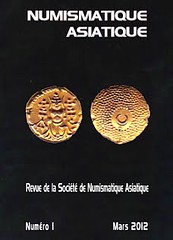 NEW PERIODICAL: Revue Numismatique Asiatique La Société de Numismatique Asiatique is a non-profit numismatic organization comprised of collectors interested in coins, medals, tokens and paper money of Asian countries from India to the Far East. The primary language of the publication is French but English articles are also published.
NEW PERIODICAL: Revue Numismatique Asiatique La Société de Numismatique Asiatique is a non-profit numismatic organization comprised of collectors interested in coins, medals, tokens and paper money of Asian countries from India to the Far East. The primary language of the publication is French but English articles are also published.
The membership fee is 32 Euros per year. Members receive the Revue Numismatique Asiatique which is published quarterly.
Main Page: https://sites.google.com/site/societedenumismatiqueasiatique/home
The Table of Contents for the 2012 issues can be seen here: https://sites.google.com/site/societedenumismatiqueasiatique/revue
Subscription may be made by Paypal here: https://sites.google.com/site/societedenumismatiqueasiatique/adhesion
Contact: numis.asia@orange.fr
I asked Craig Greenbaum for more background, and he adds:
The person in charge of the Revue Numismatique is Francois Joyaux. He collects Asian coins and has written quite a few articles in French periodicals about these coins. He and some other collectors decided to establish a revue to make it easier to publish essays. I met Francois through the Zeno.ru website and we are now email buddies.
The Revue invites collectors to submit original articles for publication. They can be in English but of course the membership is mostly French readers. I collect mostly Vietnamese cast coins and I know Howard Daniel. I travel to Vietnam and when our schedules coincide we meet together for a day in Ho Chi Minh City.
I might add that if anyone is interested, the National Diet Library of Japan has well over 200 Japanese coin books on line. The books are in Japanese of course, but may have some value to collectors who specialize in Japanese coins. The earliest book dates to the 1690's. The URL is http://dl.ndl.go.jp/#classic
They even have an old copy of the Chinese classic Quan Zhi by Zun Hong (1120-1174). The book in the library dates to 1603. The URL is http://dl.ndl.go.jp/info:ndljp/pid/2538845
If any readers are interested in more information about books available at the National Diet Library, please let me know.
BOOK: U.S. COIN & COLUMBIAN COIN PATTERN GLASS
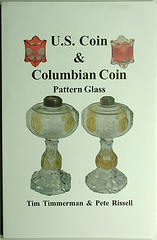 Regarding last week's query about Coin Glass,
Don Bailey writes:
Regarding last week's query about Coin Glass,
Don Bailey writes:
For several years Lois and I dealt in Early American Pattern Glass, dealing with the rare patterns, including coin glass. At one time or other we probably handled every piece. A good reference is "U.S. Coin Glass A Century of Mystery" by Tim Timmerman, 1992. Tim is no longer with us.
Dave Ginsburg writes:
I recommend "US Coin & Columbian Coin Pattern Glass" by Tim Timmerman & Pete Rissell. The copy I have is the second edition, dated 2004 and appears to have been privately published.
The book identifies genuine coin glass, describes the reproductions that were made in the 1960's and 1970's and provides a price guide. I don't know how widely the book is available, but coin dealer Numismatic Americana has copies for sale.
Updated and expanded 2nd edition, 2004. Out of print.
A little known, and scarce book in its own right. This edition includes not only U. S. coin glass, but its lesser known sibling Columbian coin glass. Fully illustrated, with dimensions for every piece.
The history of these intriguing pieces, as well as the story of the late 20th century attempt to copy them, is told. A great little book easily carried to coin shows and antique shops alike. Quantities are limited.
Priced at: $45.00
To view the Numismatic Americana listing, see: US Coin & Columbian Coin Pattern Glass by Tim Timmerman & Pete Rissell (www.numismaticamericana.com/americana-offerings/u-s-coin-columbian-coin-pattern-glass-by-tim-timmerman-and-pete-rissell/#more-2098)
THE BOOK BAZARRE
SIAMESE COINS BOOK WINS IAPN PRIZE
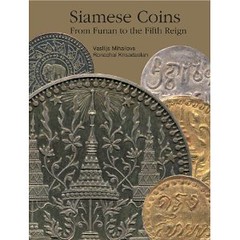 Siamese Coins from Funan to the Fifth Reign by Ronachai Krisadaolarn and Vasilijs Mihailovs and published by Riverbooks wins First Prize at the Leipzig Convention of The International Association of Professional Numismatists (or IAPN) winning more points than the other two publications
Siamese Coins from Funan to the Fifth Reign by Ronachai Krisadaolarn and Vasilijs Mihailovs and published by Riverbooks wins First Prize at the Leipzig Convention of The International Association of Professional Numismatists (or IAPN) winning more points than the other two publications
The results as reported by Jan Aamlid are:
3rd place: Rafael Tauler Fesser, Oro Macuquinoi Catalogo Imperio Espanol 1474 a 1756 1, 2, 4 y 8 (36 points)
2nd place: Italo Vecchi, Etruscan Coinage part I (56 points)
1st place: Siamese Coins from Funan to the Fifth Reign (124 points)
The International Association of Professional Numismatists (or IAPN), founded in 1951, is a non-profit organisation of the leading international numismatic firms. The objects of the Association are the development of a healthy and prosperous numismatic trade conducted according to the highest standards of business ethics and commercial practice.
The IAPN was constituted at a meeting held in Geneva in 1951 to which the leading international numismatic firms had been invited. There were 28 founding members. The objectives of the Association are the development of a healthy and prosperous numismatic trade conducted according to the highest standards of business ethics and commercial practice, the encouragement of scientific research and the propagation of numismatics, and the creation of lasting and friendly relations amongst professional numismatists throughout the world.
Membership is vested in numismatic firms, or in numismatic departments of other commercial institution, and not in individuals. Today there are more than 110 numismatic member firms, situated in five continents and twenty-one countries. the General Assembly is the supreme organ of the Association, and this is convened annually, normally in a different country.
For more information on IAPN, see: www.iapn-coins.org
SURVEY OF NUMISMATIC RESEARCH 2008-2013 SELECTION SOUGHT
 I have been asked by the International Numismatic Council to compile the following bibliographies for the upcoming Survey of Numismatic Research 2008-2013: ‘Coins: USA and Canada’, and ‘Medals: USA and Canada.’ These listings will be part of a large bibliography of recent work in numismatics (of all countries and all eras) to appear at the next International Numismatic Congress, to be held in Taormina, Sicily, in September, 2015.
I have been asked by the International Numismatic Council to compile the following bibliographies for the upcoming Survey of Numismatic Research 2008-2013: ‘Coins: USA and Canada’, and ‘Medals: USA and Canada.’ These listings will be part of a large bibliography of recent work in numismatics (of all countries and all eras) to appear at the next International Numismatic Congress, to be held in Taormina, Sicily, in September, 2015.
According to the instructions sent to me, “The purpose of the Survey is to provide a critical (but not polemical) commentary on recent work. It is a selection of the most important works that brought new material or new ideas and methods to the field in the past six years (and those are not necessarily the longest: two pages on a new coin can change a chronology). It is not intended to be exhaustive nor a list of publications that nowadays can easily be found elsewhere. As well as covering the principal works, it will also indicate the general directions of thought and changes during the period under review.” All work cited must bear a publication date from 2008 to 2013 inclusive.
In compiling these listings, I will rely of course to a great extent on past issues of The E-Sylum for publications that have been noted there. However, I would also be grateful for the suggestion of any other works that might be included. Please send the titles and publication information to me at astahl@princeton.edu in the next couple of months; my first draft is due in January, 2014.
Alan M. Stahl
Curator of Numismatics
Firestone Library, RBSC
One Washington Road
Princeton, NJ 08544
(609) 258-9127
astahl@princeton.edu
RAYMOND N. MERENA 1937 - 2013
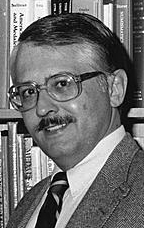 We are saddened to report that Raymond N. Merena passed away this evening in Massachusetts. In 1982 he was co-founder with Dave Bowers of Bowers and Merena Galleries and participated in the firm’s many accomplishments before retiring in 2000. After then he and his wife Patricia traveled extensively, set up homes in Alexandria (Virginia) and then Vero Beach (Florida), and enjoyed their leisure. A few years ago he was stricken with Alzheimer’s, and toward the end of his life he was hospitalized. He died peacefully, survived by wife Patricia, daughters Caroline and Sara, son Mark, and several grandchildren.
We are saddened to report that Raymond N. Merena passed away this evening in Massachusetts. In 1982 he was co-founder with Dave Bowers of Bowers and Merena Galleries and participated in the firm’s many accomplishments before retiring in 2000. After then he and his wife Patricia traveled extensively, set up homes in Alexandria (Virginia) and then Vero Beach (Florida), and enjoyed their leisure. A few years ago he was stricken with Alzheimer’s, and toward the end of his life he was hospitalized. He died peacefully, survived by wife Patricia, daughters Caroline and Sara, son Mark, and several grandchildren.
A graduate of Cornell University, born in Binghamton, NY, in 1937, Ray became part of the numismatic world in 1961 when he was hired by Jim Ruddy and Dave Bowers to be general manager of Empire Coin Co., Inc. He later moved to Ohio in 1966 to join Paramount International Coin Company, where in 1971 he was named vice-president and general manager. While there he hired David W. Akers, who later became prominent in his own right.
In 1975 Ray was an invited participant when the first ANA Roundtable was held under the direction of President Virginia Culver and was titled “Problems-Projects-Priorities.” In the meantime he supervised the production of auction catalogs and for a time served as “Trends” editor for Coin World. In 1982 when Dave Bowers organized a new company he became a partner in Bowers & Merena Galleries, Inc., as noted. The firm handed many rarities and “name” collections and was the largest-volume auction house in the world. He taught at the ANA Summer Seminar, rendered long-time service to the Professional Numismatists Guild (including serving as president 1995-1997), and was active in many other numismatic organizations and activities.
Ray lived a fine life, had many friends inside and outside of numismatics, and will be fondly remembered by all who knew him.
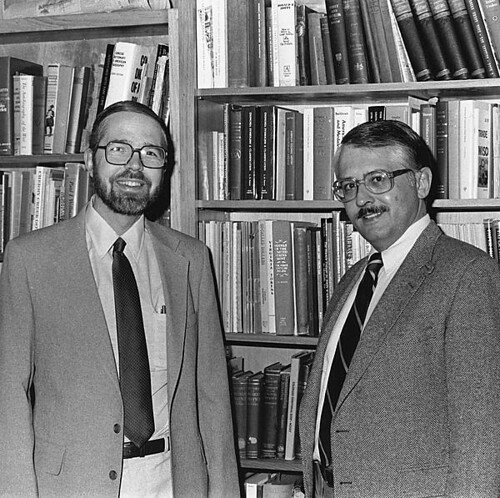
Joel Orosz adds:
I was also sad to hear about Ray Merena's passing. He and Dave Bowers formed a dynamic team, and created some of the most memorable events in the history of American numismatics.
Any messages for his Ray's wife Pat and his family can be sent to Patricia (Mrs. Raymond) Merena, PO Box 895, Wolfeboro, NH 03894
To read Merena's online obituary, see: Raymond Nicklas Merena (1937 - 2013) (www.legacy.com/obituaries/pressconnects/obituary.aspx?n=raymond-nicklas-merena&pid=164948587#fbLoggedOut)
To read the 2011 Coin World article, see: Bowers and Merena, Stack's to merge in 2011 (www.coinworld.com/Articles/ViewArticle/bowers-and-merena-stacks-to-merge-in-2011)
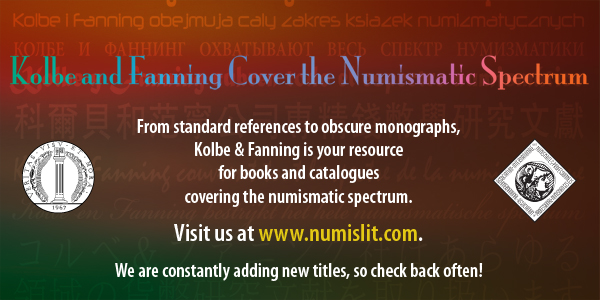
PRESIDENTIAL COIN & ANTIQUE AUCTION #83 CATALOG AVAILABLE
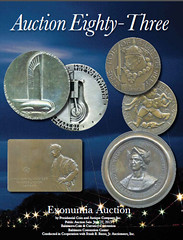 Below is a live link to our profusely illustrated Auction Eighty-Three of Tokens, Medals and Political items. The first portion of the sale will be held in conjunction with Whitman's Baltimore Coin & Currency Convention held at the Baltimore Convention Center, June 20-23, 2013.
Below is a live link to our profusely illustrated Auction Eighty-Three of Tokens, Medals and Political items. The first portion of the sale will be held in conjunction with Whitman's Baltimore Coin & Currency Convention held at the Baltimore Convention Center, June 20-23, 2013.
The physical catalog of our sale will be mailed to subscribers about June 2. If you are not a subscriber to our auction and want a physical catalog, one will be sent to you by priority mail upon our receipt of $6.00 by check, credit card (VISA, Mastercard or Discover) or PayPal (use Jlevine968@aol.com as payee.) Another alternative is to purchase a three issue subscription for $10.00, payable in the same manner.
Joe Levine
Presidential Coin & Antique Co., Inc.
P.O. Box 277
Clifton, VA 20124
571-321-2121
Jlevine968@aol.com
To view the catalog, see: www.maineantiquedigest.com/custom/presidential.htm
AN UPDATE ON MOULTON'S FRANKLIN HOARD BOOK
Alan Weinberg writes:On the PCGS Message Boards Coin forum there is a discussion concerning the publication of Karl Moulton's Ford/Franklin hoard book. I went thru the printed layout of the book over a 30-40 min period at FUN at Holabird's table. The massive book appeared to be complete at that point. One of the things I'm most eager to see is the correspondence between Ford and many luminaries in the hobby at the time- Kosoff, Norweb, Stack's , etc.
Last year, Karl Moulton was supposed to publish a "tell-all" book about John J. Ford, Jr. and his connection to the Franklin Hoard USAOG 20's. I was tempted to order the book, but in the end, I couldn't justify the price. To this day, I have seen no further information about the book, even on Karl's website. Has it indeed been published?
Karl Moulton responded:
When a 500 page draft was shown around at the 2009 ANA convention in Los Angeles, word of the forthcoming book got to Paul Franklin, oldest son of Gerow Paul Franklin - the namesake of the "Franklin Hoard".
A visit was arranged for October. Because of the large amount of previously unknown background information that was so graciously presented by Mr. Franklin, a nearly complete, 7 month re-write was undertaken, thus delaying the book until later this year.
Not wanting to create a 10 pound book resulted in the deletion of several hundred Ford letters to individuals in the 1950s-1970s, however, the pertinent letters regarding Franklin Hoard material and the marketing of such items (most have never been seen) will be included in their entirety.
To read the complete forum exchange, see: http://forums.collectors.com/messageview.cfm?catid=26&threadid=773440
Alan Weinberg writes:
I sure hope Karl does not edit out some of the Ford private correspondence letters that gives the reader some insight into the man himself. It astonishes me just how many "experienced numismatists" on the PCGS Coin Forum never met or knew Ford. Guess I am getting old.
Karl Moulton ( numiscats@aol.com ) adds:
There will hundreds of John Ford letters included, along with several of his personal invoices. The book is due to be sent from the U.S. printer on May 28th. I will be sending out all pre-order copies as soon as they arrive in Arizona.
Any orders between now and the 7th of June will be sent out immediately. Orders placed after that time will be sent around the first of August, due to being away for several weeks.
The book is hardbound and has 924 pages (with numerous color plates). Order price is $250 postpaid. I'll have a copy with me at ANA in Chicago to show people and will be taking orders.
Q. David Bowers - This highly respected American numismatic dealer and author made useful, constructive comments, and provided several personal items from his various interactions with John J. Ford, Jr. He also reviewed and helped edit the text.
Dr. Richard (Dick) Doty - Numismatic curator, researcher, and author who was extremely helpful in providing color images of items from the National Numismatic Collection housed in the Smithsonian Institution in Washington, D.C.
Paul Franklin - Son of Gerow Paul Franklin, reviewed the text and unselfishly provided items of interest from his father's estate; all of which had been previously inaccessible.
Dan Hamelberg - Numismatist and owner of the largest private American numismatic library. The original Ford correspondence used in this work, now resides in his collection.
Dennis Hengeveld - Enthusiastic collector and dealer of American coinage, provided color images from the Bank of California exhibit of western money located in San Francisco.
J. Wayne Hilton - Confederate States of America collector and author who was the original purchaser of the Ford correspondence in 2005 and was gracious enough to allow the author to obtain copies.
Fred Holabird - Author, mining geologist, and cataloguer reviewed the text and made many suggestions. His research into assay bars has been exemplary; he is the foremost authenticator for this type of material, and is president of Holabird-Kagin Americana.
Larry Holcomb - Provided commentary on the S. S. Brother Jonathan shipwreck, a $500 gold bar, and his interactions with Gerow Paul Franklin and John J. Ford, Jr.
Wayne Homren - Author and helpful editor of The E-Sylum, the electronic newsletter of the Numismatic Bibliomania Society. He is always willing to field inquiries and help educate.
Dr. Donald Kagin - Reviewed the text and is a leading dealer in American numismatics that specializes in western gold issues, among other things. He is an author who is also the editor of the Brasher Bulletin, the newsletter of the Society of Private and Pioneer Numismatists (SPPN).
George F. Kolbe - Numismatic literature dealer extraordinaire, cataloguer of the two part John J. Ford, Jr. library, along with many others, since beginning in business in 1967.
Robert D. Leonard, Jr. - Reviewed part of the text and provided extensive research into pre-1950 collectors and dealers who handled western assay bars.
Eric P. Newman - One of the most respected American numismatists. This collector, researcher, and author studies and exposes counterfeit items, and offered unique historical records from his investigations into the genuineness of numerous "Franklin Hoard" pieces.
Dan Owens - Author and researcher reviewed the text, provided material, and spent countless hours consulting on the latest research surrounding the gold and silver "Franklin Hoard" items.
Steve M. Tompkins - Collector, author, and good friend, who was responsible for the layout, design and all of the graphics seen in this book. He also provided helpful editing on numerous occasions.
To read the earlier E-Sylum article, see: NEW BOOK: JOHN J. FORD, JR., AND THE FRANKLIN HOARD (www.coinbooks.org/esylum_v15n53a04.html)
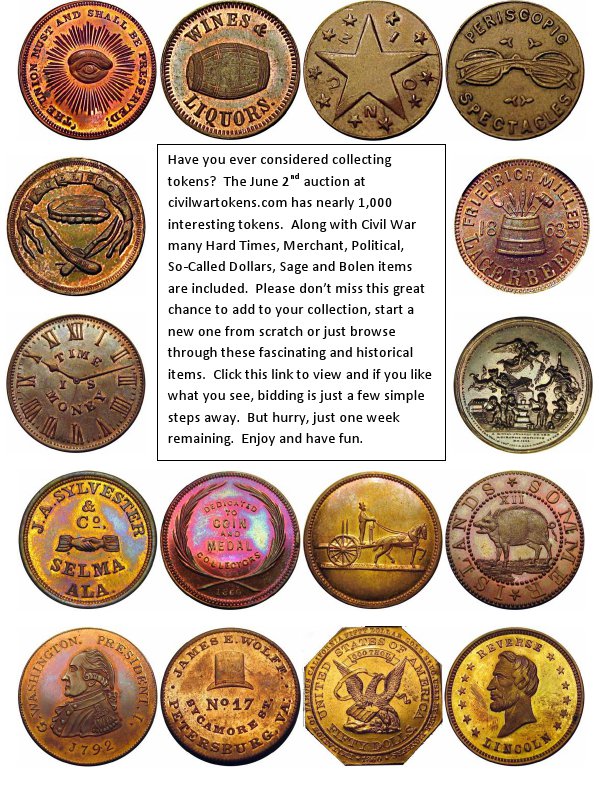
MORE ON THE "MODEL ARTIST'S" THEATER
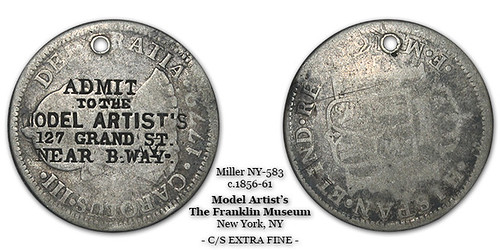
Greg Brunk writes:
Attached is the write up I did a couple of years ago. It's like a number of the new writeups -- lots of previously unpublished info. More stuff exists, but I didn't want to make this longer.
The Model Artists was an early "nude review". It was opened in the Franklin Museum Building at 127 Grand in 1856 by George Lea, who advertised extensively in the New York Herald. In fact, he had nineteen advertisements in a single issue! It is hard to describe his troupe of "female minstrels," both dressed and undressed. This description of the Franklin Museum appeared in T. Alliston Brown's History of the New York Stage (1903: 23) and he explains the term "model artists."
The Franklin Museum was situated at 127 Grand Street, upstairs, one door from Broadway. It was owned by James Mulligan, who kept a liquor store next door. He also carried on horseshoeing in the basement of 127 Grant Street, The first floor was tenanted by a Mr. Parmelee, who kept a concert saloon. The entire upper part of the building was occupied by Geo Lea, who leased the place at the close of his management of 53 Bowery (April, 1854), and named it the Franklin Museum.
The principal attractions were model artists. On Dec. 7, 1857, there were twenty-seven "ladies," under the direction of Mme. Wharton, who appeared afternoon and evening each day in the week (except Sunday) in fourteen living representations of statuary. The admission was: Orchestra seats, 50 cts,; boxes 25 cts. George Lea continued here until the close of the season of 1859-1860
To read the earlier E-Sylum article, see: WAYNE'S NUMISMATIC DIARY: MAY 19, 2013 (www.coinbooks.org/esylum_v16n20a17.html)
MORE ON S. W. CHUBBUCK
John Linhoss writes:Looking at the article about Morse code on money, I dug up an interesting medal from the S. W. Chubbuck Co. out of my collection. The company operated in Utica, N.Y. This medal was an advertisement piece issued around 1862. It clearly describes the Morse code letters and numbers. I was able to come up with a 3 cent bearer note from the company payable in postage currency at the store dated July 1, 1864. This medal is valued at $450.00 and the bearer note, much more common at $150.00


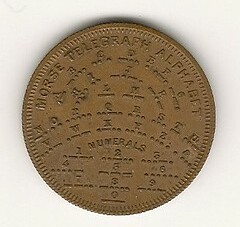
Mark Borckardt writes:
The telegraph man and his Morse Code token, was Samuel W. Chubbuck who was born in Vermont circa 1800 and lived most of his life in Utica, New York. It seems that he was also a coin collector. Martin Gengerke lists S.W. Chubbuck as a consigner to two sales:
Thomas Birch and Son, Feb. 18, 1873
John W. Haseltine, Feb. 25, 1873
The Haseltine catalog includes a plate of Large Cents, according to Al Boka, whose website ( http://1794largecents.com ) might be worth featuring in The E-Sylum.
To read the earlier E-Sylum article, see: NOTES FROM E-SYLUM READERS: MAY 19, 2013: Morse Code on S.W. Chubbuck Tokens (www.coinbooks.org/esylum_v16n20a12.html)
TOKEN, MEDAL AND POLITICAL AUCTION

Presidential Coin & Antique Co., Inc.'s Auction Eighty-Three of Tokens, Medals and Political items will be held in conjunction with Whitman's Baltimore Coin & Currency Convention at the Baltimore Convention Center, June 20-23, 2013.
Hardcopies $6 - contact Joe Levine at Jlevine968@aol.com or view the catalog online here .
NOTES FROM E-SYLUM READERS: MAY 26, 2013
More on Breen's Revision of Gilbert
Dave Bowers writes:
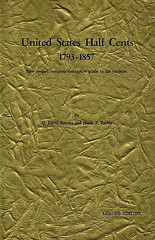 Nice issue.
Concerning the Breen book on half cents, neither Jim Ruddy nor I wanted to be authors, but I did take Walter’s notes and organize them.
Nice issue.
Concerning the Breen book on half cents, neither Jim Ruddy nor I wanted to be authors, but I did take Walter’s notes and organize them.
He wanted to be anonymous as he was having his (usual) problems with John J. Ford (Walter always had problems with those who hired him) and did not want JJF to fire him. At the time JJF was trying to build Ford Numismatic Publications (which had published Penny Whimsy) but was not getting very far.
Much more could be said, of course, but the bottom line is that while I was author in a slight way, it really was Walter’s study.
To read the earlier E-Sylum article, see: THE BREEN/BOWERS/RUDDY REVISION OF GILBERT'S HALF CENT BOOK (www.coinbooks.org/esylum_v16n20a09.html)
Tettenhorst Half Cent Collection
Speaking of Half Cents, Donn Pearlman forwarded a press release about the Tettenhorst Half Cent Collection. Thanks. Here's an excerpt.

The number one finest set of all time of United States half cents from 1793 to 1857 will be displayed for the first time in public at the June 2013 Long Beach Coin, Stamp & Sports Collectibles Expo.
The Missouri Cabinet Collection is the greatest collection of U.S. half cents ever assembled. It has a grade point average of 63.786 and is the all-time finest set in the PCGS Set Registry™. It was assembled over a period of more than 40 years by R. Tettenhorst with collaboration between him and the Eric P. Newman Numismatic Education Society in St. Louis," explained Cassi East, President of the Long Beach Expo.
"This is the only collection of half cents ever formed that contains every variety of half cent struck for circulation and the only collection to contain every variety of half cent struck only in proof."
Public hours are Thursday and Friday, June 6 and 7, 2013, from 10 a.m. to 7 p.m., and Saturday, June 8, from 10 a.m. to 5 p.m.
Corrections to the May 19, 2013 Issue
Rich Hartzog noticed my typo in Paul Bosco's name in the picture caption in the Richard Rossa story, and Jeffry L. Johnson noticed that "Columbia" should have been spelled "Colombia" throughout the piece on Scovill's coins. Sorry I missed those. Thanks. We'll fix these in our online archive.
To read the earlier E-Sylum articles, see:
RICHARD ROSSA 1943-2013
(www.coinbooks.org/esylum_v16n20a02.html)
COINS MINTED BY SCOVILL MANUFACTURING
(www.coinbooks.org/esylum_v16n20a10.html)
More on Fakes on eBay
Ron Ward writes:
I enjoyed the comments of Howard Daniel on Fakes. So I thought it would be worthwhile to add my two cents pertaining to eBay. A dead giveaway that something is not right is the statement "from my grandfather's estate" (never from my father's estate). Other sticking points are that the seller may list only 2-3 numismatic items among a list of 100 other items, the statement "judge from the scans, the condition", "sold as is, no refund given".
Several years ago, a person listed a mule of a Comita Americana medal for several hundred dollars. I indicated that this was a fake after consulting with an authority on these medals and that it should be withdrawn from eBay. Also, I notified eBay: no action was taken by either party and the medal sold. Several times I have taken on the basis of scans of US Mint presidential medals. They appeared to be the dark bronze of earlier mintages but turned out to be the golden bronze from the 1970s. Apparently the seller deliberately darkened the images.
To read the earlier E-Sylum article, see: HOWARD DANIEL ON FAKES IN NUMISMATICS (www.coinbooks.org/esylum_v16n20a19.html)
Holger Dombrowski Library Auctioned
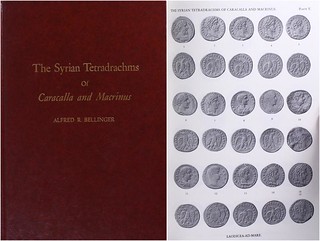 Eric Vanhove writes:
Eric Vanhove writes:
The second part of the Holger Dombrowski library was auctioned off on May 22nd by WAG online.
To access the WAG Online Auction 26 catalog, see:
//buecher.wago-auktionen.de/katalog.aspx?AspxAutoDetectCookieSupport=1
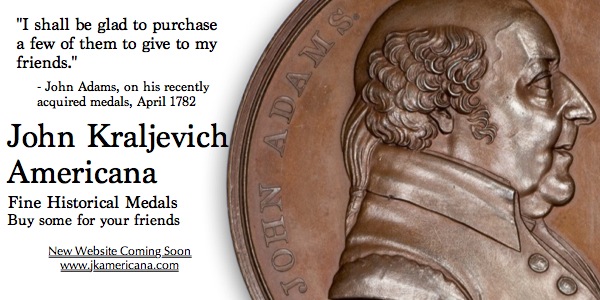
HISTORY OF THE NATIONAL NUMISMATIC COLLECTION
 The origins of the Smithsonian itself began with a numismatic angle. The James Smithson donation to found the Smithsonian Institution was made with 104,960 Gold British Sovereigns. The coins were deposited at the Mint for re-coining into United States money ($508,318.46). Today the museum still has two of the original 1838 gold sovereigns in its collection. It also has a stunningly perfect example of an 1838 United States Half Eagle made from the gold turned in for melting.
The origins of the Smithsonian itself began with a numismatic angle. The James Smithson donation to found the Smithsonian Institution was made with 104,960 Gold British Sovereigns. The coins were deposited at the Mint for re-coining into United States money ($508,318.46). Today the museum still has two of the original 1838 gold sovereigns in its collection. It also has a stunningly perfect example of an 1838 United States Half Eagle made from the gold turned in for melting.
Although the United States received the bequest from James Smithson in 1838, the Smithsonian Institution was not established until an Act of Congress was signed by President James Polk on August 10, 1846. On May 1, 1847, the cornerstone of its first building was laid on the Mall. You can visit the first buildings today with a short stroll across the Mall to the Smithsonian Castle. They are open to the public and feature a rotation of exhibits. It is like stepping back in time and visiting one of the oldest museums in the country as it looked in the 1840s. In those days most exhibits centered on what were called “Natural Curiosities.” This might include rare minerals, skeletons and mounted animal displays.
It was not until the 1880s that much interest was given to the collecting of numismatic material at the Smithsonian. In those days collecting medals was of primary interest in the museum. The Centennial Exposition of 1876 in Philadelphia provided a tremendous amount of new material for the collection.
The most important event in the history of the National Numismatic Collection occurred in 1923. Around this time period, the US Mints were closed due to a robbery at the Denver Mint. Also, the curator of the Mint Collection, Dr. T. Louis Comparette died suddenly. Because of the robbery, the Secretary of Treasury, Andrew Mellon, suggested that the United States Mint transfer its collection to the National Collection in Washington, D.C. Mellon did not like the idea of the collection being closed to visitors and unavailable for research.
In May 1923, the US Mint transferred 18,324 of the greatest coins in the world to the Smithsonian Institution. Although the Mint Collection was officially started in 1838, the collection's roots can be traced to the beginning of Mint operations in 1792. The Chief Coiner, Adam Eckfeldt, carefully saved what at the time were called “master coins” of each year. These are today more commonly referred to as Proof or Specimens. Eckfeldt also saved coins that had been redeposited at the Mint for re-coinage. An example of the famous Brasher Doubloon was obtained in this manner.
Making a list of all of the important coins given to the Smithsonian in 1923 would take pages and pages. Just a few of the more famous coins include the 1849 Double Eagle, an 1804 Silver Dollar, an 1822 Half Eagle, both 1877 Gold Unions, multiple 1907 Ultra High Reliefs, and an incredible run of early Proof coinage that began in 1817. The transferred collection also included over 100 Patterns coins, many of which are unique. Pioneer gold coins are also heavily represented, with many examples being the finest of their kind in the world.
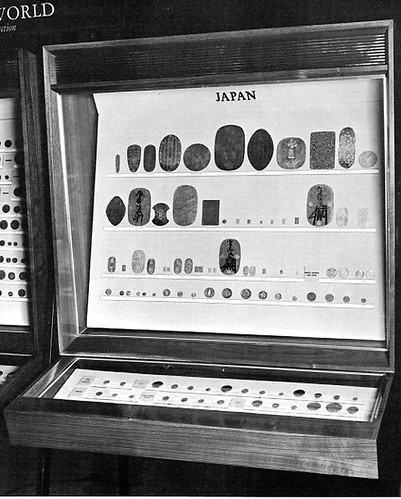
Grant Collection of Japanese Gold Coins
To read the complete article, see: BRIEF HISTORY OF THE SMITHSONIAN'S NATIONAL NUMISMATIC COLLECTION (www.ngccoin.com/news/viewarticle.aspx?IDArticle=3358&)
KENNEDY MINT PLEADS GUILTY TO KILLING FISH
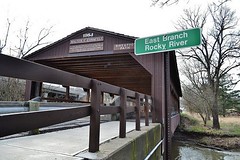 The saga of the Rocky River fish kill is finally over.
The saga of the Rocky River fish kill is finally over.
In U.S. District Court May 23, Strongsville-based Kennedy Mint and 74-year-old Teresina Montorsi, of Grafton, pleaded guilty to their roles in dumping 55 gallons of cyanide down a storm drain that led to the death of more than 30,000 fish in a 3-mile stretch of the river that included Strongsville, said U.S. Attorney Steve Dettelbach.
The business pleaded guilty to one count of violation of the U.S. Clean Water Act, and Montorsi to one count of obstruction of justice.
“Clean, fresh water is Ohio’s greatest natural resource,” Dettelbach said. “We are satisfied that we were able to determine who put the cyanide into the river and killed tens of thousands of fish. The restitution from this case will be used to restock the river with fish, so that people can again enjoy the natural beauty of the Rocky River.”
Kennedy Mint agreed to pay restitution of $30,893, or $1 for every fish killed, the release said. The money will be paid to the Ohio Department of Natural Resources and used to restock the river with steelhead trout under the terms of the plea agreement. Kennedy Mint will also make a payment to the Cleveland Metroparks. The amount will be determined at sentencing, which is scheduled for Aug. 29.
The Montorsis and Kennedy Mint, which sells collector's coins, were indicted by a grand jury Oct. 10 for dumping 55 gallons of liquid cyanide down a storm drain in their business' parking lot, and then subsequently trying to hide their involvement from investigators, the indictment alleges.
The indictment said Renato Montorsi and two employees attempted to dispose of two 55-gallon barrels of liquid cyanide into a dumpster outside of Kennedy Mint on April 16, and then emptying one of them into a storm drain by puncturing the drum with a hammer and sharp tool when the waste company did not take the drums.
When investigators asked to search the business, Teresina Montorsi stalled them while Renato Montorsi hid the drum in the warehouse, according to the indictment. On April 22 - four days after the alleged dumping - first reports of the dead fish surfaced, according the Ohio Department of Natural Resources. The organization counted a total of 30,893 dead fish a three-mile stretch of the Rocky River in Strongsville's Mill Stream Run Reservation.
To read the complete article, see:
Strongsville business, Grafton woman plead guilty to Rocky River fish kill charges
(www.cleveland.com/strongsville/index.ssf/2013/05/
parties_in_rocky_river_fish_ki.html)
THE BOOK BAZARRE
1862 RECTORTOWN, VA SCRIP NOTE ON RECYCLED BANK CHECK

Here's something I wrote up when I first got the note about eight or so years ago, plus a photo of the railroad depot at Rectortown. As far as I know, there are only four of these known, one of each of the 25¢, 50¢, $1, and $5.
This highly unusual issue of scrip actually comprises of checks from Stover, Hutchison & Co. that were painstakingly “overprinted” by hand in neat block letters to change the check to scrip. Each note bears handwritten dates, so far all in January or February of 1862. The notes are signed by several different people acting as cashier.
The 25¢ note is signed by James G. Bell, the 50¢ note by John G. Hammond, the $1 by John M. Orr, and the $5 note is signed by Samuel H. Brown. John M. Orr signs the note as mayor, who was mayor of Leesburg and signs that town’s scrip (see above). Each note bears the imprint of Robert Bell, a stationer located in Alexandria who provided most of the checks for the Bank of the Old Dominion. It is uncertain if these notes were issued by a Rectortown associate of the bank or by Stover, Hutchison & Co.
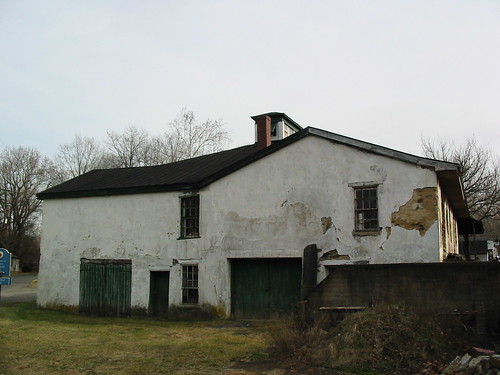
The railroad depot at Rectortown has been witness to several important events in Civil War history. It was at the depot that Union Major General George B. McClellan received notice that he was relieved of command of the Army of the Potomac in November 1862 after the Antietam campaign. In November 1864, Confederate Col. John S. Mosby captured and detained 27 Union prisoners in the depot, where soldier’s graffiti may still be seen. Mosby forced the prisoners to participate in a lottery where 7 of whom would be executed in retaliation for George Custer’s executions of seven of Mosby’s Rangers at Front Royal. The depot still stands along the Norfolk Southern Rail line.
To read the earlier E-Sylum article, see: WAYNE'S NUMISMATIC DIARY: MAY 19, 2013 (www.coinbooks.org/esylum_v16n20a17.html)
HARVEY STACK ON CATALOGING 1954 LARGE CENT SALES

When the two collections arrived at Stack’s, each was laid out in large display trays with the information that came with each coin set alongside. Just looking at these two arrays was a treat in itself. Our next job was to catalog each collection and we sought out expert assistance to best showcase the coins when offered at public auction.
My father was a student of large cents and enjoyed discussing the series with the collectors and dealers who visited Stack’s. He had developed a close friendship with Dr. William Sheldon in earlier years and he hoped he could get Dr. Sheldon to help him catalog these two collections. As chance would have it, during the late 1940s and into the 1950s, Dr. Sheldon was teaching and working at the Columbia-Presbyterian University Hospital in New York City and often came into the store to say hello to Morton and find out what was new. In this case my father answered, “Have I got a surprise for you.” Of course, once Dr. Sheldon saw the coins laid out in the trays he gasped and asked where they all had come from.
My father told him these were from two very old-time collections. Dr. Sheldon looked further and said, “Mort, do you realize that I will now have to rewrite my book as the Condition Census is no longer accurate and there are a few no one ever listed for record.” “Man,” he continued after taking another breath, “would I like to work on these.” Morton, taking advantage of the exclamation replied, “How would you like to catalog both collections for Stack’s?” His response? “Boy, would I!”
So the two friends struck a deal…
It was the Stack’s plan to offer the Davis Graves Collection in April of 1954 and the Anderson Dupont Collection in September of that year. In the spring of 1954 the King Farouk Collection was scheduled for sale in Cairo and we hoped to put our two great collections on sale before the King Farouk coins created a drain on collector funds. If we could meet our timetable we could beat out any sale that might alter our success. Dr. Sheldon understood and said he could do it. However he said he would need our help and asked to have C. Douglas Smith to help him. Dr. Sheldon stated: “We worked together on my book and he can take great dictation. He types flawlessly. He will speed up the entire process of cataloging and help to meet the dates you set forth.” Morton responded, “We have known Doug for years and he is good, but it will take someone like you to convince him to work on this project.” Dr. Sheldon replied, “Doug will be as excited as I am to do the job.”
My father then laid out the game plan. First of all the coins were to be kept at all times in the vaults in the office, the photography was to be done in the office, and the exhibition would also be held there, in accordance with the rules our insurance company set forth when we took possession of the collections. Morton told Dr. Sheldon: “Since you and Doug work during the day, we will set up office space for you and Doug here in the back office. As you know we are part of the Hotel Salisbury but they do not have a dining room but they do have room service.” My father noted that we had used this room service many times so that we did not have to lock up the premises each time when we worked nights and weekends.
As Dr. Sheldon and Doug would be working late afternoons and Saturdays, it was agreed that their dinners would be pre-ordered and, Morton continued, “My son Harvey who is the only younger Stack presently in the office will sit with you, help you when he can, and secure your work after each session. If you and Doug can give us a few days each week, we will get the work done. I will work with you when I can, help with the proofreading and other chores.” So, I had the unique opportunity to learn from Dr. Sheldon and Doug how experts dealt with two collections of this importance. For my father (and for me) this was a Win-Win situation. Both Dr. Sheldon and Doug Smith saw the importance of the opportunity as well and they both agreed to the terms.
And so both large cent collections were cataloged, Davis-Graves first and then Anderson-Dupont, and the schedules were met. Collectors received their catalogs in time to study them, view the coins in our offices, and make up their minds as to which pieces they wanted to acquire.
To read the complete articles, see:
Remember When: The Story Of Two Great Large Cent Public Auctions In 1954
(stacksbowers.com/Blogs/remember-when-story-of-two-great-large.html)
Remember When: The Story Of Two Great Large Cent Public Auctions In 1954, Part 2
(stacksbowers.com/Blogs/remember-when-story-of-two-great-large_23.html)
MICRO-MEN ON HOBO NICKELS
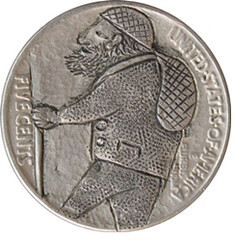 In the last issue of BoTails, many learned about mini-men or little men hobo nickels. They are carvings of men from head to toe, although a few carvers may opt to end the mini-man at the thigh. Historically, there is another term for some of these carvings and that is bindlestiff. This term is specific for a hobo carrying a bindle. The bindle is the stick with an attached sack of belongings. Not all mini-men have bindles, some have walking sticks, some have sacks slung across their backs much like Santa Claus, and still others my not carry anything at all. A term or classification was needed for the broader group.
In the last issue of BoTails, many learned about mini-men or little men hobo nickels. They are carvings of men from head to toe, although a few carvers may opt to end the mini-man at the thigh. Historically, there is another term for some of these carvings and that is bindlestiff. This term is specific for a hobo carrying a bindle. The bindle is the stick with an attached sack of belongings. Not all mini-men have bindles, some have walking sticks, some have sacks slung across their backs much like Santa Claus, and still others my not carry anything at all. A term or classification was needed for the broader group.
For classic hobo nickel collectors, there are only a few known artists that carved miniature men. Currently recognized hobo nickels for mini-men are “V” Neck, Hunchback, Long Coat, Twofer, and Sharp Ear. The hobo nickel “Dicer” that sold in the FUN 2013 auction for a record $24,200 could be considered mini-men, but there is an even better term that was also coined at the FUN 2013 show. In the Hobo Nickels With Mini-Men exhibit, there was reference to “Micro-Men”. The three men in “Dicer” can also be described as micro-men.
“Micro-men” is both a subcategory of mini-men and can also stand on its own as a category unto itself. With many modern carvers using microscopes, the detail is phenomenal and as a result many subjects have been reduced further in size. To be a micro-man, the little person must be a component of a bigger picture. Generally the design can stand on its own with the removal of the person as he is just an adjunct whereas the mini-man is the primary object. He should be no larger than a tenth of the size of the coin and can be far smaller.
There were several micro-men shown in the exhibit at FUN. One was by a well-known miniature artist, Robert Shamey. He is perhaps best known for carving a toothpick into a train. Works like that got him noticed in circles outside of the hobo nickel hobby. His miniature train theme has also appeared on the rim of coin.
 Over the last few years, Ron Landis has begun carving coins that warrant another term to be added to the quality designation forms. His painstaking microscopic carvings of late should be called Stupendous, rather than be grouped in with the “mere” Superior carvings. In the recent OHNS auction, Landis supplied bidders with another fantastic carving of micro-men and a boxcar. All totaled, Landis fit seven men into the design and believe it or not, there was even room for more if he wanted.
Over the last few years, Ron Landis has begun carving coins that warrant another term to be added to the quality designation forms. His painstaking microscopic carvings of late should be called Stupendous, rather than be grouped in with the “mere” Superior carvings. In the recent OHNS auction, Landis supplied bidders with another fantastic carving of micro-men and a boxcar. All totaled, Landis fit seven men into the design and believe it or not, there was even room for more if he wanted.
The skill level involved in making these coins is amazing. Many equal or even surpass the best classic cameo hobo nickels. However, remember that most are made by trained artists and professional engravers verses itinerant laborers. Also, the modern age has provided all sorts of fancy equipment to aid in these works of art, such as air powered gravers, microscopes, and at the very least, jeweler’s visors. Through creativity, ingenuity, and technology, today’s collector has some magnificent selections to choose from.
For more information on the Original Hobo Nickel Society, see: www.hobonickels.org

ANCIENT COIN COULD REWRITE AUSTRALIAN HISTORY
 Five copper coins found in northern Australia could rewrite the country's history.
The coins are thought to date back as early as the 900s and are believed to have originated in Africa.
Five copper coins found in northern Australia could rewrite the country's history.
The coins are thought to date back as early as the 900s and are believed to have originated in Africa.
Written history of Australia only dates back to 1606, when Dutch explorers landed in the region, and researchers from Indiana University want to find out how the thousand-year-old copper coins ended up on the other side of the Indian Ocean six centuries earlier.
Lead researcher, Australian scientist Ian McIntosh said the coins were first discovered by soldier Maurie Isenberg in 1944.
Isenberg was stationed on the Wessel Islands - an uninhabited group of islands of the north coast of Australia - during World War II and he found the coins buried beneath the sand.
In 1979, Isenberg sent the coins to an Australian museum and now McIntosh wants to investigate how they arrived on the island.
To read the complete article, see: The discovery that could rewrite Australian history: Ancient copper coins suggest the country was found SIX CENTURIES before Captain Cook arrived (www.dailymail.co.uk/sciencetech/article-2327362/Coins-suggest-Australia-discovered-SIX-CENTURIES-Captain-Cook-arrived-island.html)
To read the complete article, see: Ancient discovery set to rewrite Australian history (www.theage.com.au/national/ancient-discovery-set-to-rewrite-australian-history-20130519-2juck.html)

Historians credit James Cook with discovering Australia back in 1770. But a long ignored discovery of five African copper coins in its Northern Territory, along with a map with an "X" on it, suggests somebody beat him to it — and by a long shot.
If validated, the coins could mean seafarers from distant lands reached Australia much earlier than previous thought.
Princeton numismatic curator Alan Stahl writes:
It's a copper Pysa of Sultan Bargash Ibn Sa'id of Tanzania, AH 1299, equal as you say to CE 1881-82. Good catch.
George Cuhaj of Krause Publications adds:
Obviously someone thinks it is an AD date written in Arabic, rather than an AH date which needs the addition of the years. Steve Album or Joe Lang at Steve's company should be able to figure this out.
Chris Fuccione contacted Ian McIntosh, the main researcher from Indiana University. Apparently the illustration used in this article is NOT one of the coins in the hoard after all. McIntosh writes:
The coins from Australia are held in the Powerhouse Museum in Sydney and are not on public display.
To read the complete article, see: These 1,000-year-old coins could rewrite Australia's history (http://io9.com/these-1-000-year-old-coins-could-rewrite-australias-hi-509355104)
To read earlier E-Sylum articles, see:
ANTHROPOLOGIST SEEKS ORIGIN OF REMOTE AUSTRALIAN COIN HOARD
(www.coinbooks.org/esylum_v16n10a30.html)
14TH CENTURY SILVER COIN FOUND IN MAINE
(www.coinbooks.org/esylum_v15n37a23.html)
LEGAL WARNINGS ON FLAWED JAMES JOYCE COIN
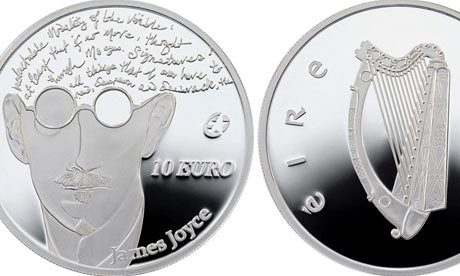
THE Central Bank has declined to comment on revelations that it was warned about potential design and copyright problems before it issued a flawed James Joyce commemorative coin.
The €10 silver coin sold out within two days of being issued last month despite carrying on its front an error in a quotation from Joyce's most famous work, 'Ulysses', alongside an image of the author that was not approved by his estate.
Documents released under Freedom of Information legislation reveal that Department of Finance officials alerted the Central Bank on at least two occasions about the possibility of difficulties with the James Joyce estate over copyright and design of the coin.
To read the complete article, see: Central Bank got legal alert on Joyce coin (www.independent.ie/irish-news/central-bank-got-legal-alert-on-joyce-coin-29294954.html)
To read the earlier E-Sylum article, see: JAMES JOYCE COIN QUOTATION ERROR (www.coinbooks.org/esylum_v16n15a24.html)
Joyce's grandson, Stephen Joyce, described the coin as "one of the greatest insults to the Joyce family that has ever been perpetrated in Ireland".
The documents released to RTÉ News show that the Central Bank Numismatic Advisory Committee originally wanted to mint a collectors' coin this year commemorating Jonathan Swift, the author of Gulliver's Travels, as part of a Europa series on prominent European writers.
However, the Department of Finance urged that Joyce might be a more suitable choice, with more international appeal. It also noted that "there may be problems with copyright in the case of a Joyce coin", according to the minutes of a meeting between officials from the department and the bank last May.
An internal submission to Minister for Finance Michael Noonan a month later noted that the bank had suggested a number of other prominent Irish writers as options, including William Butler Yeats, Seán O'Casey, Bram Stoker and Maria Edgeworth, as well as Swift.
The submission added that the department was instead recommending "James Joyce as the first option with William Butler Yeats as the second option in the event that difficulties are encountered with the Joyce estate in terms of the coin design".
Aside from the textual error, the image of James Joyce on the front of the coin also displeased his grandson, Stephen, who manages the author's estate. He told the Irish Times that the image was "the most unlikely likeness of Joyce ever produced".
He also complained that the errors would have been avoided if the Central Bank had consulted him properly.
To read the complete article, see: Central Bank warned in advance over Joyce coin (www.rte.ie/news/2013/0524/452296-central-bank-joyce-coin/)
DIGITIZING THE VATICAN LIBRARY
Little things slow down the process of putting 40 million pages of ancient manuscripts in the Vatican Library online: gold or silver in the illuminations, bindings that disintegrate if you open them, getting the synergy right.
“It is important to realize if there is gold or silver in a manuscript. That requires a very particular process because the light will be different,” said Luciano Ammenti, who is in charge of IT at the Vatican and the project to digitize the storied library’s 82,000 manuscripts.
The project, finally up and running a year after its announcement, uses an armada of equipment to capture the vast range of pages amassed by the Vatican over five or six centuries into one of the world’s most valuable collection of books and manuscripts. But synergy trumps sharpness.
“It is the right synergy between sensors, optics and lighting, together with the highest possible resolution,” the Vatican website explained.
So the high tech systems include “cradles” which allow the book to open to less than 180 degrees on its own, without contact and without glass plates.”
With 2.8 petabytes of storage from global data company EMC, the Vatican Library had to decide where to begin. In all, said Ammenti, the collection will take 43 petabytes of storage.
Ammenti’s staff of 15 digital archivists can, on a good day, scan one page a minute once all the equipment is in place. Because of the intensity of the process, however, they only work directly on the manuscripts for four and a half hours, he said.
The team uses eight different types of scanners and four varieties of digital cameras to deal with the fragile and rare texts. None is automatic.
To read the complete article, see:
Digitizing history: 82,000-manuscript collection Vatican Library goes online
(www.thestar.com/news/world/2013/05/02/digitizing_history
_82000manuscript_collection_vatican_library_goes_online.html)
Archives International Auctions, Part XV
Archives International Auctions, Part XVJune 4th, 2013
Worldwide Banknotes, Coins, Scripophily & Autographs
10:00 am Local Time (lots 1-903)
U.S. Coins, Banknotes & Security Printing Ephemera
No earlier than 5:00 pm (lots 904-1092)
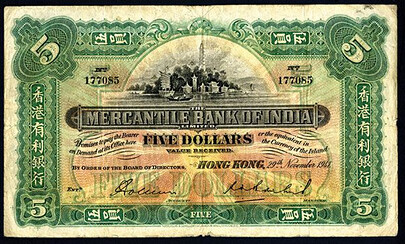
Mercantile Bank of India, 1941 Issue
Rare U.S. & Worldwide Banknotes, Coins Scripophily and Security Printing Ephemera Including Additional Selections from the Hamtramck Collection, another offering from the American Bank Note Commemoratives Inventory as well as Properties of Banknotes, Coins and Scripophily from various consignors.
and Security Printing Ephemera Including Additional Selections from the Hamtramck Collection; The Somerset Collection as well as distinguished
Properties of Banknotes, Coins and Scripophily from various consignors.
June 4th, 2013 at our offices in Fort Lee, New Jersey
Included will be over 1,000 lots of Rare Worldwide Banknotes,
Coins, Scripophily and security printing ephemera.
Please view our website for auction updates
1580 Lemoine Avenue, Suite #7
Fort Lee, NJ 07024
Phone: 201-944-4800
Email: info@archivesinternational.com
WWW.ARCHIVESINTERNATIONAL.COM
URSULA KAMPMANN'S TURKEY DIARY, PART 5
We were actually somewhat surprised that it is now forbidden to drive up to the acropolis of Pergamum. Instead, there’s now a cable car whose gondolas fill up with the five-figure number of tourists that spill out of the thousands of tour buses daily in summer.
Since we had set out a bit late that morning, without any particular rush to reach our destination, we didn’t have to wait and had a gondola all to ourselves.
As with any good Greek city, Pergamum has a myth surrounding its founding: The king of Tegea had received an oracle in Delphi revealing that his grandson was going to kill his (the king’s) sons. In order to prevent this, he took measures and made his daughter Auge a virginal priestess in the Temple of Athena, where Heracles did more than just admire her from afar. In fact, Auge bore him a son that she named Telephus. Obviously, her father was none too pleased by this development, and the daughter was to be cast out to sea on a boat to drown …
 Damascus (Syria). Philip the Arab, 244-249. Bronze.
Damascus (Syria). Philip the Arab, 244-249. Bronze.
Rev. Telephus is suckled by a doe.
… the son was brought to the mountains, where he was suckled not by a female wolf, but by a doe. As an adult, he found his mother again living with the childless King Teuthras in Mysia.
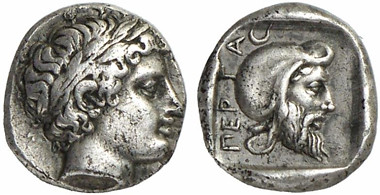 Pergamum. Gongylos(?). Diobol, around 420.
Pergamum. Gongylos(?). Diobol, around 420.
Rev. Satraps head with tiara facing right.
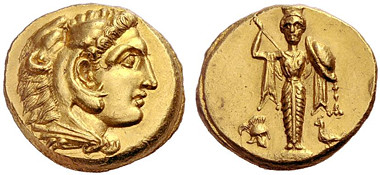 Pergamum. Heracles, son of Alexander the Great, + 309(?).
Pergamum. Heracles, son of Alexander the Great, + 309(?).
Gold stater, prior to 309.
To read the complete article, see: Springtime in Turkey – Part 5 (www.coinsweekly.com/en/News/4?&id=2012)
NEW FRENCH REPUBLIC VALUES GOLD AND SILVER COINS
The Monnaie de Paris has just launched a new gold and silver coin series which presents the values of the French Republic. The designs are quite intriguing, with the silver coins containing the French words for the the values with the arrangement and appearance inspired by the words themselves.
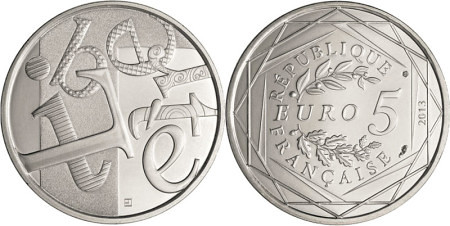
Shown above is the €5 silver coin for Liberté. (Click to enlarge.) The differing patterns applied to the letters and their arrangement provide an impression of the meaning of the word. The other silver coins use different typography, sizing, arrangement ,and shapes to express the specific values.
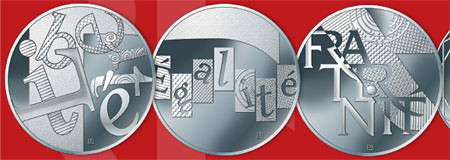
There are three different €5 silver coins which each contain the values included in the French Motto Liberté, Égalité, Fraternité. The coins are struck in 33.3% silver with a weight of 7.3 grams and diameter of 26 mm. This makes for silver content of about 0.078 troy ounces per coin. The mintage for each coin is 2,000,000 pieces.

Each of the seven coins contain portions of the letters “RF” which is apparent when the coins are placed together.
To read the complete article, see: Values of the French Republic Gold and Silver Coins (world.mintnewsblog.com/2013/05/values-of-the-french-republic-gold-and-silver-coins/)
CRICKET COIN TOSS IDEA DISPUTED
Kavan Ratnatunga writes:
It is sad that Journalists don't understand the difference in terminology between a coin and a medal. Maybe because at ICC cricket matches they now toss a specially minted medal, which they call a coin, and Auction it for profit.
A SOUTH African entrepreneur says the International Cricket Council (ICC) is withholding more than R250,000 in royalties he believes are due to him.
Dave Papenfus claims the ICC has hijacked what he regards as his idea of using specially minted coins for the toss at major tournaments. The coins are then auctioned.
"The coin toss is always broadcast; it is a big part of any cricket match," Papenfus said. "There are at least two of everything else — two balls, six stumps, four bails, lots of shirts, caps and hats. But there can only be one coin. That was the whole concept."
Papenfus says he was paid R15,000 after the idea was tested successfully at the 2009 World T20 in England.
Since then, Papenfus says, he has not received a cent. Instead, he was offered a three-month contract as a supplier, which he declined. He also says he was led to expect to be paid royalties going forward — an assertion the ICC disputes.
To read the complete article, see: South African entrepreneur takes on ICC (www.bdlive.co.za/sport/cricket/2013/03/13/south-african-entrepreneur-takes-on-icc)
To view the video, see: Sachin Tendulkar gets gold coin on Akshaya Tritiya (/www.youtube.com/watch?NR=1&v=uyruOfAzLuQ&feature=endscreen)
THE BOOK BAZARRE
FICTIONAL SHIPS ON COINS: FLYING DUTCHMAN AND THE PEQUOD
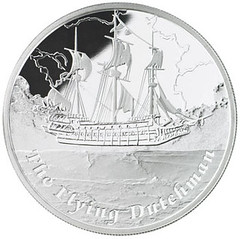
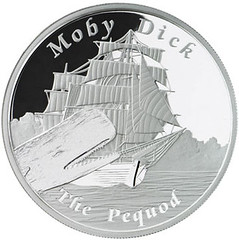
The Perth Mint has launched a new silver coin series entitled “Famous Ships That Never Sailed” which features ships from legend and literature. This makes an interesting accompaniment to the previous series “Ships That Changed the World”.
The first coin features the Flying Dutchman, a legendary ghost ship that was doomed to sail the seas for eternity. When sighted, the ship is seen in a ghostly glow and is believed to be a portent of doom. The reverse design depict the Flying Dutchman floating above a rough sea amid lightning.
The second coin features the Pequod from Herman Melville’s classic novel Moby Dick. The ship is commanded by Captain Ahab in his obsessive pursuit of the white whale Moby Dick. The reverse design of the coin carries a depiction of the Pequod and the white whale.
Both coins are issued as legal tender under the authority of hte Government of Tuvalu, with the obverse carrying the Ian Rank-Broadley effigy of Queen Elizabeth II, along with the monetary denomination and “2013″ date.
Struck in 1 troy ounce of 99.9% pure silver to proof quality, the coins have a diameter of 40.60 mm. The mintage is limited to just 3,000 per coin. Each comes packaged in a wooden display case in the shape of a book, along with a numbered certificate of authenticity.
To read the complete article, see: Famous Ships That Never Sailed: Flying Dutchman & Pequod (world.mintnewsblog.com/2013/05/famous-ships-that-never-sailed-flying-dutchman-pequod/)
To read the earlier E-Sylum article, see: SHIPS ON AMERICAN COINAGE (www.coinbooks.org/esylum_v16n18a22.html)
NEW EURO BANKNOTES PRESENT VENDING MACHINE PROBLEM

Security Features on the new Five Euro note
The European Central Bank this month introduced a brand-new version of the €5 banknote, loaded with next-generation security features to deter counterfeiting.
There’s just one problem with the crisp new bills: Vending machines spit them out. The Italian newspaper La Repubblica reported this week on its own tests in machines selling everything from soft drinks and gasoline to transit tickets in 10 cities. Ninety percent of the new notes were refused. “You can try as hard as you want, but the new 5 euro banknote introduced on May 2 will not be accepted by vending machines,” the newspaper said.
Journalists in Belgium, meanwhile, found the bills rejected by parking-garage payment machines and by some ATMs when users attempt to make cash deposits.
Just to be sure, I tested one today in a vending machine at a post office in Paris. No luck there, either.
The new bill, which marks the first update of the euro’s paper currency since its introduction in 2002, features an enhanced watermark and a hologram with a portrait of the Greek goddess Europa. A numeral “5″ in one corner of the bill changes from green to blue when passed in front of a light.
These and other changes are intended to deter counterfeiting of the €5 note, of which approximately 1.6 billion are in circulation at any given time, according to the ECB. New versions of the €10, €20, and other higher-denomination notes are set to be rolled out during the coming months, and they will have similar security features.
To read the complete article, see: Euro Banknotes Designed to Foil Counterfeiters Also Defeat Vending Machines (www.businessweek.com/articles/2013-05-23/euro-banknotes-designed-to-foil-counterfeiters-also-defeat-vending-machines)
TECHNOLOGY REVIEW ARTICLE ON THE EVOLUTION OF BITCOINS
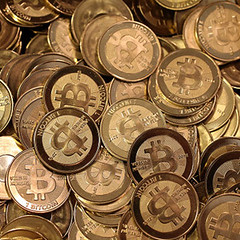 This past Sunday, Doug Scribner took out five $100 bills and began feeding them into what looked like a small, white ATM in San Jose Conference Center in California. The machine swallowed the bills smartly and credited him with an equivalent value in bitcoins, an intangible, digital currency that is backed by not gold or any government, but by math.
This past Sunday, Doug Scribner took out five $100 bills and began feeding them into what looked like a small, white ATM in San Jose Conference Center in California. The machine swallowed the bills smartly and credited him with an equivalent value in bitcoins, an intangible, digital currency that is backed by not gold or any government, but by math.
Scribner was one of an estimated 1,100 people who attended Bitcoin 2013, a weekend-long event in the heart of Silicon Valley and the first large conference dedicated to Bitcoin. Unsurprisingly, all those present seemed certain that the cryptocurrency was set to upend the world of finance, perhaps more. But the event also offered something new: evidence that Bitcoin is gaining traction outside its existing community of enthusiastic early adopters.
Bitcoin’s origins are mysterious. It was created by an unknown individual or individuals who used the pseudonym Satoshi Nakamoto. Cryptographic operations and oversight from a peer-to-peer network of people running Bitcoin software process transactions and protect against counterfeiting without the need for a central authority.
One reason Bitcoin is interesting, says Jeremy Liew, a partner with Lightspeed Venture Partners, is that it could displace the practice of wiring money across borders, which underpins much international trade today and can be onerous. “If I’m trying to wire a supplier in China it’s a three- or four-day process with heavy fees,” he says. “Bitcoin transactions can be instant and free.”
Liew and others shrug off the currency’s wild swings in value over the past few years, saying that the general trend is upward and that volatility will decrease as more people use it. BitPay, OpenCoin, and others also offer services that make it possible for a business to make sure incoming bitcoins keep their value by having them instantly converted to dollars. “Bitcoin can be used as just a transport network,” says Liew.
Several people from Silicon Valley involved in Bitcoin liken its potential to that of the Internet, saying it will enable money to flow as easily across the world, and between people, as e-mails and video do today. Yet mingling with the crowd in San Jose also made it clear that some of those who have supported Bitcoin for the longest don’t like the approach of these startups and their investors.
Bitcoin’s earliest adopters were libertarians, cryptographers, and coders attracted by the idea of money that could operate without government oversight. They liked the idea that people could exchange bitcoins without knowing or trusting one another. Large exchanges and payments companies that operate much like existing financial institutions and follow the same regulations compromise both of those features, some argue.
“When those people talk about revolution, it’s ‘I put out a disruptive app.’ That’s not a revolution to me,” said one attendee, who told me that his online handle is Alexmat and that he quit a job with Goldman Sachs’s commodity desk in Tokyo to operate a private, one-man Bitcoin exchange business in Seattle. “These companies would be happy for it to just function like Mastercard. That is not what Bitcoin is about.”
I met Alexmat within the large crowd assembled for one of the best-attended talks of Sunday. Ian Miers, a PhD student at Johns Hopkins University, took the stage to explain that Bitcoin’s design doesn’t provide the “anonymity” many assume, and offered a possible solution: an extension to Bitcoin called Zerocoin. Bitcoin’s design relies on a public log of all transactions; that log doesn’t include names, but researchers have found that it can be used to deanonymize transactions, says Miers, something he believes will soon be attractive to marketing and financial companies, as well as law enforcement. “The reality of the matter is that Bitcoin is not that private,” said Miers. “It’s actually worse than cash.”
To read the complete article, see: Bitcoin Hits the Big Time, to the Regret of Some Early Boosters (www.technologyreview.com/news/515061/bitcoin-hits-the-big-time-to-the-regret-of-some-early-boosters/)
FEATURED WEB PAGE: HISTORY OF KOREAN COINAGE
This week's Featured Web Page is on the History of Korean Coinage.Korea did not begin to use money until the Koryo Period (Goryeo 高 麗) (936-1392 AD) when coins from China's Song Dynasty (宋朝) (960-1279 AD) were imported and began to circulate. Prior to this time, barter based on rice and cloth was the principal means of exchange.
The first coins actually minted in Korea occurred during the 15th year (996 AD) of the reign of King Songjong (成宗). This coin was cast in both bronze and iron and was based on the standard Chinese cash coin which was round with a square hole in the center.
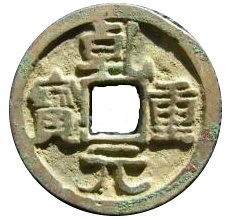
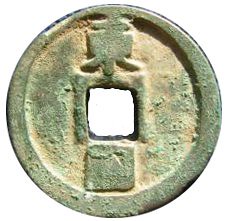
primaltrek.com/koreancoins.html

